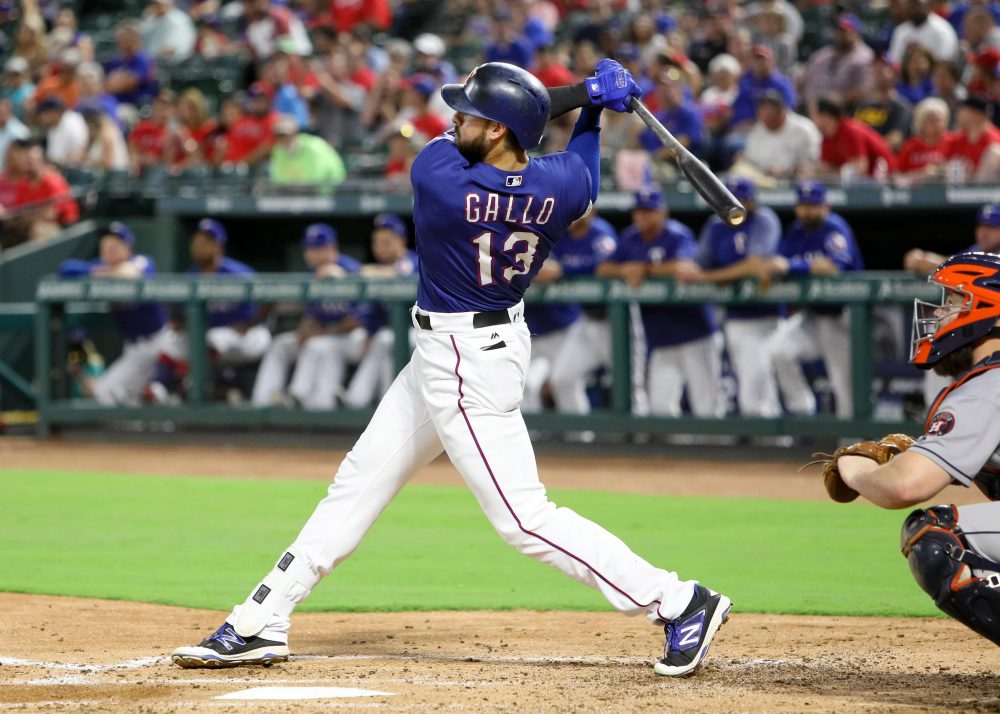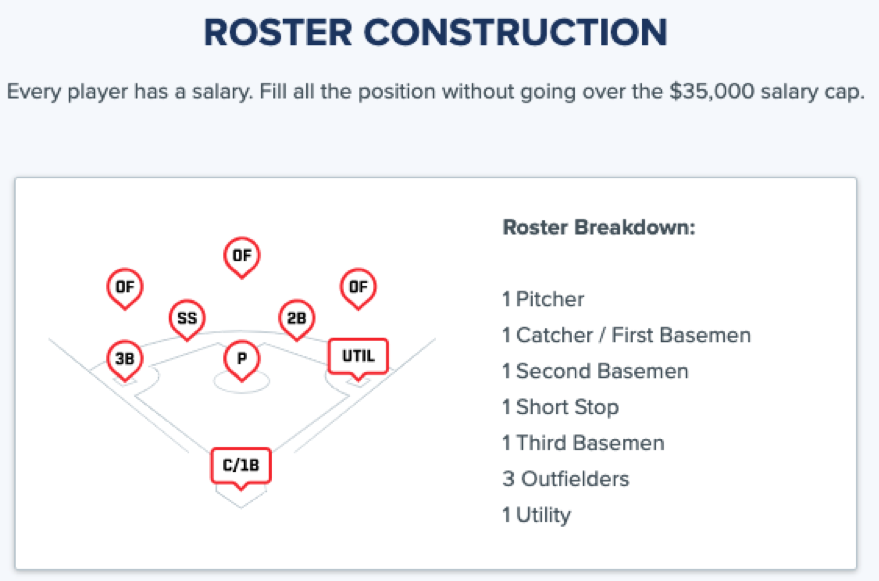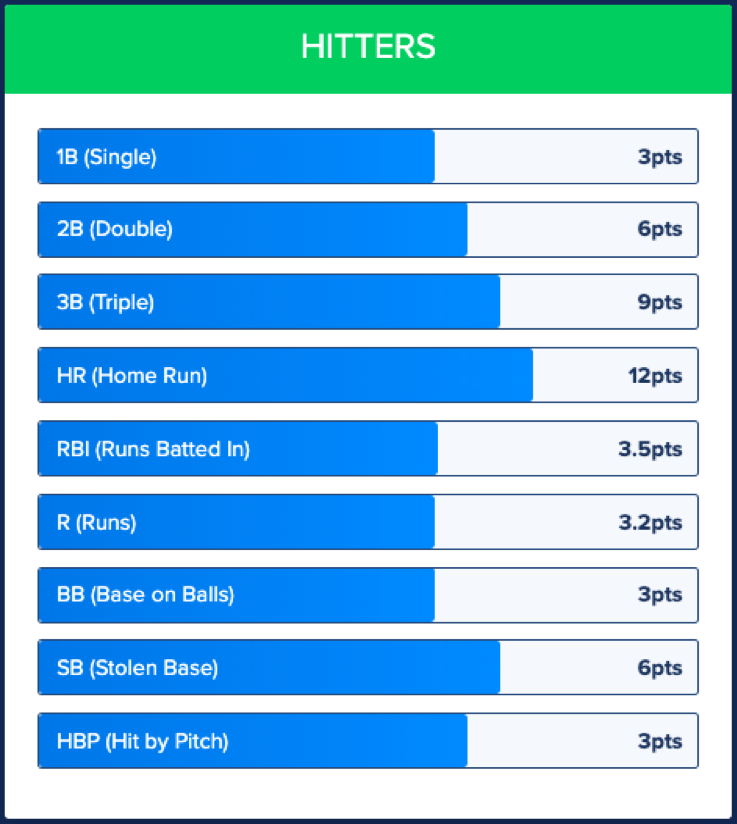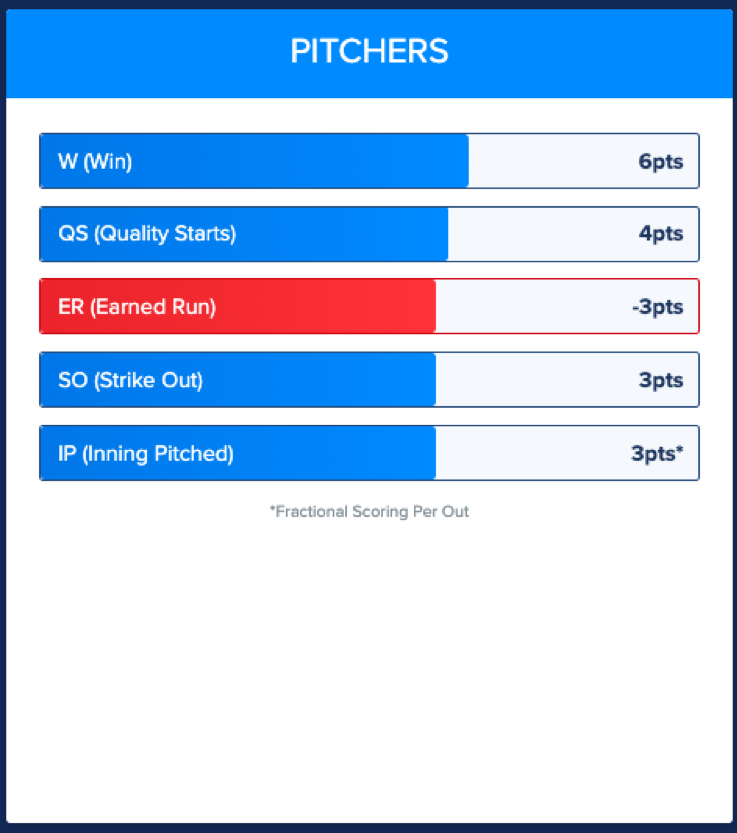
With daily fantasy sports representing a new way to enjoy baseball, Baseball Prospectus is offering a free contest to its subscribers today. No deposit is required to play; just create an account, log in, and build your best lineup. Check out the payout structure to see what you can win:
1st — $25 and BP Team Split Book of Your Choice
2nd — $10 and BP Team Split Book of Your Choice
3rd — $5 and BP Team Split Book of Your Choice
4th-50th — $1
51st-102nd — $0.25
If you’re new to daily fantasy, it can seem a bit overwhelming. We’ve got you covered, with five tips for improving your DFS game. Following that, you’ll find a few of my favorite FanDuel plays for the Friday, April 12 slate.
1. It’s not the same as season-long fantasy; but it’s not totally different, either.
If you’ve landed here, chances are you’ve played season-long fantasy baseball. Maybe you’ve even played it for a long time. Maybe you’ve even been good at it. If you’re a BP reader, it’s likely that advanced stats like DRC+ and FIP and SwStr% aren’t anything new to you. While playing season-long (particularly in auctions and deeper leagues) and simply knowing a lot about baseball can give you a leg up, the transition to daily fantasy can be rocky for newer players, especially at first. You’re learning a new game. Couple that with the fact that baseball, by its nature, is full of day-to-day variance, and it’s clear why managing expectations is important in the early going.
2. Know your format.
At FanDuel, the standard format allows $35,000 to fill out a roster. Just as in season-long fantasy, many players have multi-position eligibility. Unlike at some sites, FanDuel only allows you to roster one pitcher, which makes it a top priority in building lineups.

3. Know your scoring system.
When considering hitters, chasing upside is key. That doesn’t mean always targeting homer-or-bust sluggers like Joey Gallo and praying for a long ball. It does mean that “safe,” low-upside slap hitters will rarely make or break your night. One of the most crucial elements of daily fantasy hitter selection is “stacking,” or rostering a group of hitters from the same lineup whose production is correlated.
Let’s use Gallo as an example. If Gallo hits a solo homer, it’s worth 18.7 points at FanDuel (HR + R + RBI). If you also rostered Nomar Mazara, who hit a single and was on first base when Gallo homered, Mazara’s single would suddenly be worth 6.2 points instead of 3.0 (1B + R), and Gallo’s home run would jump to 22.2 points from 18.7 (HR + R + 2 RBI). The obvious downside here is that the more players you roster from the same team, the more risk you incur if that team fails to produce. While stacking has become more prevalent in “cash game” (double-ups, 50/50s, head-to-heads), it is almost a necessity in guaranteed prize pools, the large-field tournaments with bigger prize pools.
Take a look at how hitter scoring works:

As for pitching, strikeouts should be the primary driver of your decision-making (more on this below). Consider this scenario:
Pitcher A: 5 IP, 1 ER, 3 K
Pitcher B: 5 IP, 4 ER, 7 K
From a “real” baseball perspective, Pitcher A was more effective; he limited runs, which is the main objective. It may be surprising to know, then, that Pitcher A would have earned 21.0 FanDuel points; Pitcher B, despite giving up four earned runs, would have outscored him with 23.0 FanDuel points.
Here’s how pitcher scoring breaks down:

One of the key differences that sets FanDuel apart from other sites is the way it rewards innings. While strikeouts are king, the four-point quality start bonus at FanDuel means targeting pitchers who regularly go deep into the game should also be a priority.
4. Pay attention to the small stuff.
Unlike in roto fantasy baseball, where the year-long cumulative format washes over the bad decisions you may have made throughout the season, daily fantasy is a granular game where tiny decisions can make all the difference. Park factors (is the hitter you’re considering playing at Camden Yards or Marlins Park?), platoon splits (is the pitcher you’re considering known for getting shelled by opposite-handed hitters?), weather (is there a risk my pitcher gets pulled during a rain delay?) … all of these minute details (not to mention hundreds of others) should become a part of your decision-making process. Because your competition is considering them, and DFS is a constant search for tiny edges over your opponent.
5. Ownership percentages matter.
In “cash games”—your double-ups, 50/50s, and head-to-heads—where your goal is to simply finish in the upper half of the field (minus the “rake,” the fee that the sites take), a player’s projected ownership is almost irrelevant. In these lower-risk, lower-return contests, your goal is to build a lineup with the highest floor possible (while not ignoring ceiling, of course). Stability is the goal.
In leagues and GPPs, where a smaller percentage of the field is paid out, the incentive is not just to keep pace, but finish at or near the top. In these contests, ownership percentage is everything. Game theory comes into play, and it’s imperative to think outside the box, to fade some of the players “everyone” will be playing.
Let’s look at a recent example. On Wednesday night, Jacob deGrom was well ahead of the rest of the slate’s pitchers according to any projection system. With massive ownership, deGrom allowed six earned runs and needed 97 pitches to make it through four innings. Those who took a different approach to roster construction, fading the “best” option in favor of a lower-owned option (say, Derek Holland, who struck out nine batters over seven innings against the Padres), were catapulted past the deGrom owners in the standings. It’s an extreme example, sure, but the point stands: in a highly variant sport like baseball, seeking more off-the-radar players with upside is the best way to approach tournaments.
***
DFS Quick Picks: Friday, April 12
SP – Patrick Corbin ($10,000) vs. Pirates
Corbin’s story is well documented; promising but injury-prone starter begins throwing sliders, only sliders, lots and lots of sliders, and suddenly becomes one of the better strikeout pitchers in the game. Now in a new uniform, Corbin still possesses elite strikeout upside, as evidenced by his previous start, in which he notched 9 strikeouts against the Mets. Corbin has been hit hard this year, including being taken deep three times in that same start (twice by J.D. Davis, once by Michael Conforto). But against a Pirates team whose eight home runs on the year haven’t even kept pace with Khris Davis, Corbin should have no trouble keeping the ball in the yard.
SP – Carlos Carrasco ($10,500) @ Royals
At the high end of the pitcher pool, it’s a virtual toss-up between Corbin and Carrasco, who, in his last start, pulled off the rare feat of striking out 9 batters in only five innings. Carrasco’s home/road splits are something to behold. Since 2015, he’s struggled at hitter-friendly Progressive Field with a 4.29 ERA, allowing opposing hitters to slash .266/.315/.458. On the road, Carrasco has been a different guy, posting a 2.75 ERA and holding batters to .207/.260/.337. Carrasco gets a positive park shift on Friday, moving to Kaufmann Stadium, and though expensive at $10,500, he provides plenty of upside.
1B – Kendrys Morales ($2,200) @ Rangers
The switch-hitting Morales was a sneaky fixture near the top of StatCast leaderboards in 2018 (his 52.6 percent of batted balls at 95+ mph was second-best in MLB, between Aaron Judge and J.D. Martinez). Morales and the rest of the A’s should have no trouble producing against Rangers lefty Drew Smyly. While Morales has hit for a bit more power against right-handed pitching, this is purely a price play. He’s hitting in the middle of a potent lineup, and he’s near minimum salary. You’ll need a bat or two in this price range to pay up for more elite (read: more Khris Davis-ish) hitters.
2B – Rougned Odor ($2,800) vs. Athletics
Odor has been a disaster this year, striking out over 31 percent of the time and slashing .167/.255/.214. We’re dealing with a sample size of two weeks, though, and over the course of his career, Odor has been a solid source of power with a bit of added value on the base paths. As with Morales, Odor is a necessary evil of roster construction; if you want to pay up for Carrasco or Corbin, you’ll have to make sacrifices. A guy with a lifetime .463 slugging and stolen base upside against a strike-throwing righty in Mike Fiers seems like a sacrifice worth making.
3B – Jose Ramirez @ Royals
What do D.J. LeMahieu, Ryon Healy, and Maikel Franco have in common? Here are two things: 1.) They’re all much worse at hitting than Jose Ramirez, and 2.) They’re all more expensive than Jose Ramirez at FanDuel on Friday. With a .154 average and just two extra-base hits (both doubles) on the season, Ramirez hasn’t gotten it going yet. It’s also true that the matchup isn’t ideal; while Royals right-hander Brad Keller is far from an ace, his 54.4 percent ground ball rate was sixth-highest in MLB last year, which limits hitter upside. But Ramirez is a hitter who was regularly priced over $5,000 at FanDuel last season. His sluggish start has resulted in a massive discount, and being price sensitive is a key component of daily fantasy.
OF – Andrew Benintendi ($3,600) vs. Orioles
Benintendi is the leadoff hitter for one of the top offenses in baseball (and remember: lineup spot is critical, since a leadoff hitter is more likely to get an extra plate appearance over someone batting lower in the order). He’s got one of the most exploitable matchups of the day against Baltimore right-hander David Hess (not to mention their bullpen, which has an MLB-worst 7.88 ERA). In 53 innings pitched against left-handed hitters for his career, Hess has allowed 15 home runs, or 2.38 HR/9. Yikes.
OF – Khris Davis ($4,600) @ Rangers
There’s nothing sneaky about rostering a player coming off back-to-back two-homer games. There’s nothing sneaky about rostering power hitters against fly ball pitchers in hitter-friendly venues. There’s nothing sneaky about paying up for the cleanup hitter on the team with the highest projected run total on the slate.
Everyone is going to be playing Khris Davis on Friday, but that doesn’t mean you shouldn’t. The player with three consecutive 40-homer campaigns has already recorded nine this season, and he’s as good a bet as you’ll find for another one in a plus matchup against Drew Smyly. There’s always merit for fading high-owned players in tournaments (like, say, Baseball Prospectus’ freeroll). And there are certainly other high-end bats that could easily outproduce Davis (J.D. Martinez for $100 less against David Hess or Aaron Judge for $300 more against Lucas Giolito may end up being lower-owned pivots with equal upside). However, Davis may be the best overall play on the slate, and even at $4,600, he feels like a bargain.
Play today’s free contest for Baseball Prospectus readers by clicking here.
Thank you for reading
This is a free article. If you enjoyed it, consider subscribing to Baseball Prospectus. Subscriptions support ongoing public baseball research and analysis in an increasingly proprietary environment.
Subscribe now